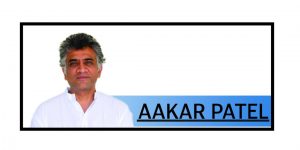Doval Doctrine

India’s Defence Planning Committee was set up on 19 April 2018. It was chaired by national security advisor Ajit Doval and included the foreign secretary, defence secretary, chief of defence staff, the three service chiefs and secretaries of the Ministry of Finance.
It set itself the enormous tasks of looking after ‘national defence and security priorities, foreign policy imperatives, operational directives and associated requirements, relevant strategic and security-related doctrines, defence acquisition and infrastructure development plans, national security strategy, strategic defence review and doctrines, international defence engagement strategy’, and so on. It met once, on 3 May 2018, and does not appear to have met after that.
In the absence of a national security doctrine India has presumably relied upon what is informally referred to as the Doval Doctrine. This doctrine may not be out yet in print but it is available on video. In February 2014, a few weeks before he was appointed national security advisor, Doval spoke at the Sastra University in Thanjavur. During his speech, he made the following points:
Terrorism was a strategic threat to India because it was an international phenomenon, because Pakistan fed and promoted it; and because India has a large Muslim population.
However, terrorism could not be fought because it was an idea, a word. Only terrorists could be fought (or ‘degraded’ in capacity), because only a tangible enemy could be defeated, not a word.
India thus had to name its threat, in this case, Pakistan. Having identified the enemy, Doval asked the question, ‘How do you tackle Pakistan?’ and then proceeded to explain.
The problem of India’s national security strategy was Pakistan’s ability for sub-conventional warfare (cross-border terrorism and militancy) and India’s inability to escalate militarily in response because of the nuclear threat.
Doval said: ‘I talked about their having the nuclear threshold, having the strategic weapons systems, missiles, strategic partnership with China. How do we tackle this?’
It was simple. He said: ‘You know we engage an enemy in three modes. One is a defence mode. Chowkidars and chaprasis. That if somebody comes here we will prevent him (from entering).
One is defensive-offence. To defend ourselves we will go to the place from where the offence is coming. (The) third is the offensive mode where you go outright. Nuclear threshold is a difficulty in the offensive mode, but not in the defensive-offence.’
At the moment, he said, meaning under Manmohan Singh’s government, ‘we work only in the defensive mode’.
What he was recommending was that India attack Pakistan in various ways short of conventional war. In his words: ‘… working on the vulnerability of Pakistan. It can be economy, internal security, it can be political. International isolation. I am not going into details. But … you change the engagement from defensive mode.’He implied that there was no option but to do this since the offensive mode was closed because there was no control of escalation leading up to the nuclear threshold. Similarly, for him, the defensive mode was useless.‘You throw hundred stones on me, I stop ninety but ten still hurt me. I can never win. Either I lose or there is a stalemate. You start war at your time, throw the stone with what you want, you talk when you want, you have peace when you want.
‘If you have defensive-offence we will see where the balance of the equilibrium is. Pakistan’s vulnerability is many, many times higher than that of India. Once they know that India has shifted its gear from defensive to defensive-offence they will find that it is unaffordable for them. You can do one Mumbai, you may lose Balochistan. There is no nuclear war involved. There is no engagement of troops. If you know the tricks we know the tricks better than you.’
He continued: ‘Our only difficulty has been we have been in the defensive mode. If we had been in defensive-offence mode we could have reduced the casualties we have suffered.’
This was the Doval Doctrine. It posited India’s strategic threat as terrorism from Pakistan, and its response was to do unto the enemy what was being done to you.
It is unclear whether this unwritten doctrine was adopted by the government, but Doval’s decade as NSA means that it must have had a strong influence.
In 2020, India was faced with a challenge on the other front. In assessing this situation, former general Prakash Menon noted that, for several decades, India’s political guidance to the military had been oriented towards Pakistan as the immediate threat. But now that the Chinese threat was at the doorstep, this would have to change. The political objectives expected to be achieved by the military resided in a document called the ‘Raksha Mantri’s Directive’ (which dealt with how much ammunition and spares the armed forces must keep in stock in anticipation of conflict) drawn up under the UPA. That directive, Gen Menon said, ‘continues to lack parentage for the lack of a coherent National Security Strategy. The Defence Planning Committee, headed by the NSA, was assigned this task two years ago. Nothing has emerged so far.’ That was in 2020.
After Pahalgam the situation has again shifted to the western front. It has now been five years since the clash with China and seven years since the Defence Planning Committee was formed. Perhaps recent events will encourage the government to put in place a national security doctrine on the basis of which we can proceed to act when we are attacked, whether conventionally or through acts of terrorism.
By Aakar Patel
News